The American Red Cross
during World War II
.
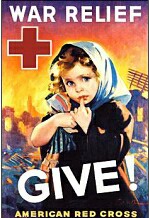 |
. |
World War II brought about the largest and
most rapid expansion of American Red Cross humanitarian activities in its
history.
Prior to actual US entry into the war, Red
Cross ships brought supplies and medical treatment to needy overseas refugees.
Warehoused supplies and first-aid ambulances saw extended use in such places
as England, Finland, Monaco, China, Philippines and even German-occupied
France and Poland. |
.
| When the United States declared war, an upsurge
of volunteers and war fund drives strengthened Red Cross to an eventual
strength of 7.5 million volunteers.
The "Three Ds" (Drill, Dependability and Discipline)
became the new Red Cross watchwords. Medical clinics, mobile dispensaries
and health courses were established throughout the United States. Scrap
drives were initiated and civil defense offices opened. |
.. |
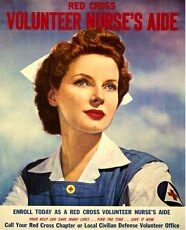 |
.
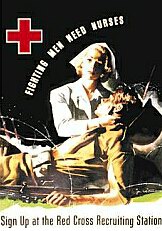 |
.. |
The Red Cross once again performed Herculean
service in recruiting nurses for the armed forces, providing hospital and
medical care, procuring and making medical supplies, and organizing morale-building
services such as mobile canteen and clubs for the soldiers.
At the same time, the Red Cross also responded
to home-front disasters ranging from train wrecks and industrial plant
explosions to massive fires that caused high loss of life (notably the
Boston nightclub and Connecticut circus fires). |
.
| One of the largest and most important Red
Cross programs during the war was the Red Cross Army-Navy Blood Donor Service.
This service was an outgrowth of the Plasma-for-Britain drive in 1940.
By the end of the war, the massive program
had collected over 6,150,000 liters (13 million pints) of blood. This blood
was converted into liquid and dried plasma, which enabled lifesaving deliverance
to civilians and solders in every Allied-controlled area during the war. |
..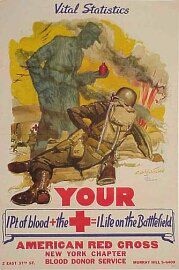 |
|
..
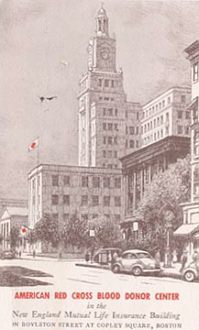 |
.v |
Not only the military, but most of American
society had a policy of segregation in WW2. Therefore, the ARC had an official
policy of strict segregation as well as the military.
In fact, this policy was so racist that blood
drawn from Black citizens during wartime Red Cross Blood Donor Drives had
to be marked separately, and could only be used for Black soldiers. Whites
were afraid that "colored blood" would poison their bodies and turn them
nonwhite, a common fear at that time because of laws against nonwhites
marrying white women and so forth. |
..
Acknowledgment
.
| The American Red Cross achieved great success
in relieving the human suffering caused by wartime and natural disasters
through organized civilian volunteer participation. Moreover, tremendous
strides were made toward improving health, preventing disease and mitigating
distress throughout the world.
The Red Cross spirit of cooperation and compassion
played an instrumental part in making the final Allied victory possible
on a quicker and more humane scale. The Red Cross offered relief efforts
on a global basis in regions either secured or bypassed by advancing armies. |
.. |
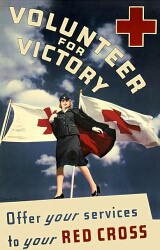 |
.
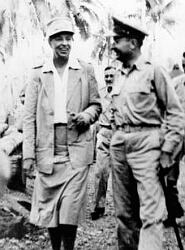
Eleanor Roosevelt wearing her
ARC
uniform meets Major General
Beightler
|
.. |
Nevertheless, problems remained. One of the
great disappointments was the Red Cross continued insistence on segregation,
despite the valiant efforts of First Lady Eleanor Roosevelt (herself a
uniformed Red Cross volunteer) to change racist policies.
Another disappointment was the Red Cross effort
to repeat its World War I success in supplying US prisoners of war with
care packages. The American Red Cross started a program to deliver food
and personal packages to 1.5 million allied soldiers held captive within
German and Japanese prison camps. |
.
Unfortunately, the International Red Cross
was misled by the Nazi and Japanese authorities. For example, they inspected
Nazi prison camps on behalf of the Geneva Convention and sent back pictures
of smiling captured American prisoners and warm letters to America stating
how good the camp conditions were. Many American families were sadly deceived
by this and sent packages to their loved ones, only to find out after the
war that their men had been seriously mistreated, starved, tortured or
even killed. As a result, the American Red Cross reputation after the war
suffered from being unfairly judged by the misleading behavior of the International
Red Cross. |
